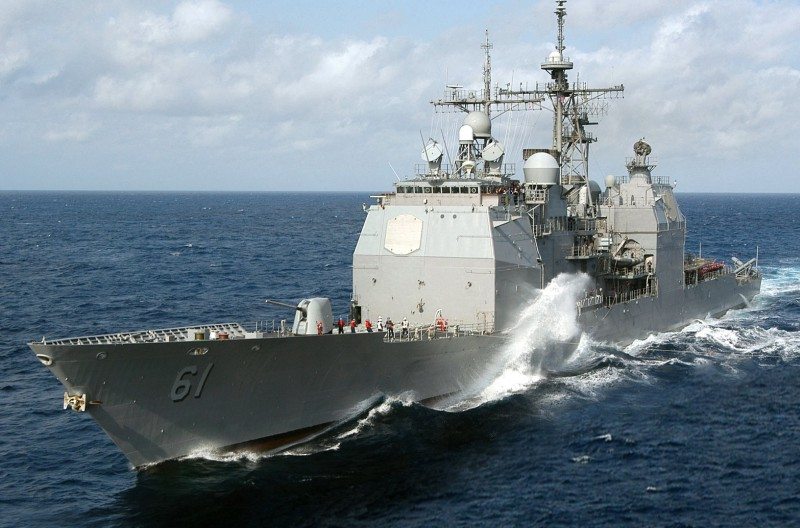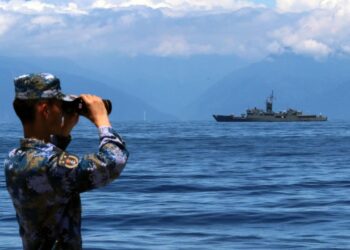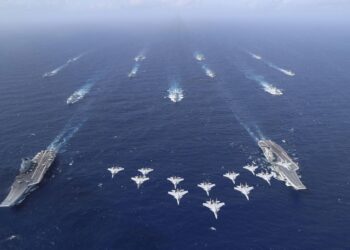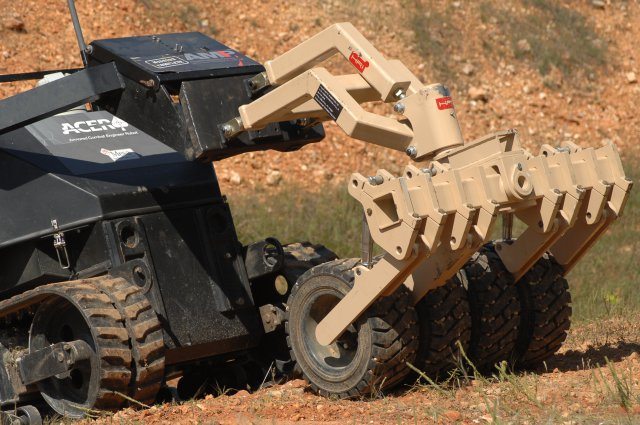Refueling U.S. Navy vessels, at sea and underway, is a costly endeavor in terms of logistics, time, fiscal constraints and threats to national security and sailors at sea.
In Fiscal Year 2011, the U.S. Navy Military Sea Lift Command, the primary supplier of fuel and oil to the U.S. Navy fleet, delivered nearly 600 million gallons of fuel to Navy vessels underway, operating 15 fleet replenishment oilers around the globe.
From Seawater to CO2
Scientists at the U.S. Naval Research Laboratory are developing a process to extract carbon dioxide (CO2) and produce hydrogen gas (H2) from seawater, subsequently catalytically converting the CO2 and H2 into jet fuel by a gas-to-liquids process.
“The potential payoff is the ability to produce JP-5 fuel stock at sea reducing the logistics tail on fuel delivery with no environmental burden and increasing the Navy’s energy security and independence,” says research chemist, Dr. Heather Willauer.
NRL has successfully developed and demonstrated technologies for the recovery of CO2 and the production of H2 from seawater using an electrochemical acidification cell, and the conversion of CO2 and H2 to hydrocarbons (organic compounds consisting of hydrogen and carbon) that can be used to produce jet fuel.
“The reduction and hydrogenation of CO2 to form hydrocarbons is accomplished using a catalyst that is similar to those used for Fischer-Tropsch reduction and hydrogenation of carbon monoxide,” adds Willauer. “By modifying the surface composition of iron catalysts in fixed-bed reactors, NRL has successfully improved CO2 conversion efficiencies up to 60 percent.”
A Renewable Resource
CO2 is an abundant carbon (C) resource in the air and in seawater, with the concentration in the ocean about 140 times greater than that in air. Two to three percent of the CO2 in seawater is dissolved CO2 gas in the form of carbonic acid, one percent is carbonate, and the remaining 96 to 97 percent is bound in bicarbonate.
If processes are developed to take advantage of the higher weight per volume concentration of CO2 in seawater, coupled with more efficient catalysts for the heterogeneous catalysis of CO2 and H2, a viable sea-based synthetic fuel process can be envisioned. “With such a process, the Navy could avoid the uncertainties inherent in procuring fuel from foreign sources and/or maintaining long supply lines,” Willauer said.
NRL has made significant advances developing carbon capture technologies in the laboratory. In the summer of 2009 a standard commercially available chlorine dioxide cell and an electro-deionization cell were modified to function as electrochemical acidification cells. Using the novel cells both dissolved and bound CO2 were recovered from seawater by re-equilibrating carbonate and bicarbonate to CO2 gas at a seawater pH below 6. In addition to CO2, the cells produced H2 at the cathode as a by-product.
These completed studies assessed the effects of the acidification cell configuration, seawater composition, flow rate, and current on seawater pH levels. The data were used to determine the feasibility of this approach for efficiently extracting large quantities of CO2 from seawater. From these feasibility studies NRL successfully scaled-up and integrated the carbon capture technology into an independent skid to process larger volumes of seawater and evaluate the overall system design and efficiencies.
The major component of the carbon capture skid is a three-chambered electrochemical acidification cell. This cell uses small quantities of electricity to exchange hydrogen ions produced at the anode with sodium ions in the seawater stream.
As a result, the seawater is acidified. At the cathode, water is reduced to H2 gas and sodium hydroxide (NaOH) is formed. This basic solution may be re-combined with the acidified seawater to return the seawater to its original pH with no additional chemicals. Current and continuing research using this carbon capture skid demonstrates the continuous efficient production of H2 and the recovery of up to 92 percent of CO2 from seawater.
Located at NRL’s Center for Corrosion Science and Engineering facility, Key West, Fla., (NRLKW) the carbon capture skid has been tested using seawater from the Gulf of Mexico to simulate conditions that will be encountered in an actual open ocean process for capturing CO2 from seawater and producing H2 gas. Currently NRL is working on process optimization and scale-up. Once these are completed, initial studies predict that jet fuel from seawater would cost in the range of $3 to $6 per gallon to produce.
How it Works: CO2 + H2 = Jet Fuel
NRL has developed a two-step process in the laboratory to convert the CO2 and H2 gathered from the seawater to liquid hydrocarbons. In the first step, an iron-based catalyst has been developed that can achieve CO2 conversion levels up to 60 percent and decrease unwanted methane production from 97 percent to 25 percent in favor of longer-chain unsaturated hydrocarbons (olefins).
In the second step these olefins can be oligomerized (a chemical process that converts monomers, molecules of low molecular weight, to a compound of higher molecular weight by a finite degree of polymerization) into a liquid containing hydrocarbon molecules in the carbon C9-C16 range, suitable for conversion to jet fuel by a nickel-supported catalyst reaction.











